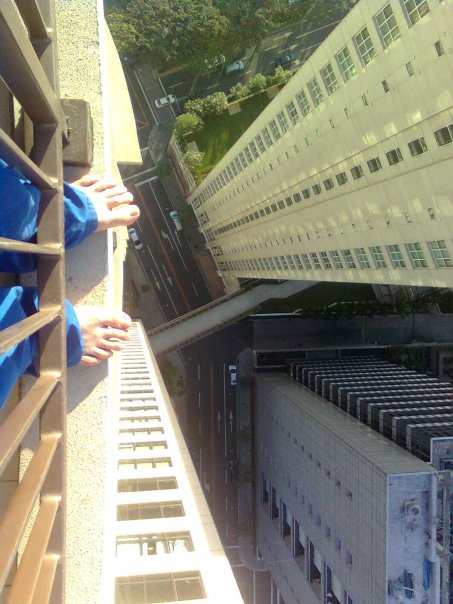
How does Parkinson's start? What are the symptoms? how can the process be slowed or can it be cured? Average length of life after being diagnosed?
PD is a tricky isease. Complicated and intertwined.
Read this link about somewhere near the start – the dopamine triad:
parkinsonsfocustoday.blogspot.com…
Parkinson's disease may begin long before the symptoms which send the PWP to the doctor(s) for a diagnosis. Better education of medical personnel is needed here.
The problem with the really early signs/symptoms is that they could be almost anything and PD is hard to diagnose accurately as the blood test in the pipeline has not yet become "standard issue." Eventually there will be more specific tests for eyes/iron presence and MRIs and the like. For now the diagnosis is a series of questions and observation.
The other trick is that although Parkinson's disease is still considered to be predominantly an idiopathic disease with only about 10% max being considered genetic, there is significant research into the possibility that it is actually genetic with a variety of triggers such as environmental toxins, pesticides, insecticides, herbicides, heavy metal exposure, serious head trauma, stress
Ok so what are some of the precursors and symptoms – those warnings which can occur a few or several years prior to the diagnosis and while most can be symptomatic of other conditions, they are certainly indicators that Parkinson's disease could be the cause:
Sleep disorders
Depression – stress
Loss of sense of smell (possibly taste as well)
Feeling "off" – a general sense of something being not right
Handwriting becomes smaller – cramped
Vague tingling sensations
Slight difficulty with movement – perhaps rising from a chair – perhaps walking at their normal stride and pace.
Feeling stiffer
Voice becomes quieter – people ask you to repeat what you said
Loss of expression in voice and/or facial muscles
At a loss for a word or thought – different from younger times
Gait change – one leg might begin to drag a bit
Posture might become stooped
"Frozen" shoulder
For some women it is literally a pain in the neck
And then the symptoms which send a person for diagnosis:
Tremors – usually on one side of the body – hand, leg – when at rest
Gait changes: at a certain point some PD patients are not slower but faster as their bodies actually seem to lurch forward rapidly – or shuffling
Balance problems – Postural Instability
Problems swallowing/choking/eating/breathing/droo… – muscle stiffness
Freezing in mid-stride
Bradykinesia/Akinesia -slowing of movements – getting dressed is no longer an automatic thing but a concentrated effort – new skills must be learned to complete these tasks (Occupational Therapy may be needed)
Cognitive problems – cover several areas
Urinary problems – incontinence is one
Constipation
Sexual dysfunction
Skin problems – both ways: too oily and too dry
Vision problems
The trick is that when you suspect something is wrong to see a doctor because the dopamine neurons are dying and the actual diagnosis is usually made when 60-80% of those neurons have self destructed. the internist/GP/Family Practitioner you see should not be making the diagnosis but instead referring you to a Neurologist specializing in neuro-motor disorders.
When diagnosed the next trick is for the patient not to accept: "You've got Parkinson's, have a nice day" A proactive patient needs to ask what the doctor suggests be done and needs to know that they don't go to the boilerplate answers. Dopamine agonists were designed to be the first line after diagnosis – before any other drug therapy is initiated. There are several agonists available. all have side effects but not everyone gets those side effects.
To our way of thinking the MAOI-Bs may be the best place to begin as long as not contraindicated. Azilect is one treatment which may slow the progression of PD.
Other agonists such as Mirapex (pramipexole) and Selegline have some unusual side effects but work well for many.
Some people add supplements such as CoQ10 which is a powerful antioxidant. Vitamin E complex, Vitamin B complex with a stress on B-2, B-6; Vitamin C with the bioflavinoids (sidestep the grapefruit) Curcuminoids (Turmeric ingredient), sublingual Glutathione, NAC (N acetyl L cysteine) Acetyl L Carnitine, Alpha Lipoic Acid, Liver support in Milk Thistle,Vitamin D (balance with A) the Omegas 3-6-9, there's a long list and you can't take everything and shouldn't.
There is also physical therapy in the form of exercise. In this case "Forced Exercise" which has been demonstrated to relieve symptoms for a few weeks at a time:
parkinsonsfocustoday.blogspot.com…
Cures may be in the pipeline. perhaps within 10 years. at the above referenced site you will also find information about pipeline drugs and therapies.
There are surgical options such as Deep Brain Stimulation which allows some patients to reduce meds.
So yes, the process can be slowed but time is of the essence. There is no "do nothing" approach. it is also important that you know that some symptoms are similar to Huntington's and Wilson's disease. neither diagnosis nor treatment is the same and they need to be ruled out.
Disease onset can be gradual or rapid. the progression can be slow or be slowed in some cases but not all. If a patient has access to hospitals which specialize in PD, they should get referrals there. Once a course of treatment has started they can be seen closer to home. this is disease that requires knowledgeable medical professionals and the same kind of patient.
They say that the life span is about the same. but quantity does not equal quality.
On this journey you need to bring your sense of humor, your caregiving support, your perseverance, willingness to exercise, your wallet, good health insurance and reading/research skills. Hope and faith don't hurt either.